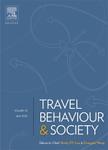版权所有:内蒙古大学图书馆 技术提供:维普资讯• 智图
内蒙古自治区呼和浩特市赛罕区大学西街235号 邮编: 010021

作者机构:Univ North Carolina William States Lee Coll Engn Dept Ind & Syst Engn Charlotte NC 28223 USA Univ North Carolina Sch Data Sci Charlotte NC 28223 USA
出 版 物:《TRAVEL BEHAVIOUR AND SOCIETY》 (Travel Behav. Soc.)
年 卷 期:2025年第39卷
核心收录:
基 金:North Carolina Department of Transportation [RP2024-33] School of Data Science at UNC Charlotte
主 题:Wi-Fi log data Human mobility analysis Generalized hierarchical framework Data processing
摘 要:Wi-Fi log data, including communication actions between clients and Access Points (APs), can be used to infer human movement and travel activity and thus would serve as a reliable data source for human mobility analysis. As more and more modern cities or communities provide public free Wi-Fi services, a vast amount of public Wi-Fi log data will be collected and have the potential to be used to characterize human travel patterns and thus develop more effective urban transportation management strategies. However, Wi-Fi log data processing is not trivial. Wi-Fi networks established by various internet equipment manufacturers and devices have different network settings and log file formats. Additionally, the complexity of Wi-Fi log data, along with the ping-pong phenomenon and invalid messages, can result in analysis bias and errors. Though previous studies have processed the specific Wi-Fi log data individually in different ways, a common framework that can address public Wi-Fi data from different locations is needed to improve data processing efficiency and analysis effectiveness. This study proposed a hierarchical and general Wi-Fi data processing and analysis framework to extract client travel activities from Wi-Fi log data. Wi-Fi log data collected from three communities in North Carolina- one university campus, the city of Wilson, and the town of Holly Springs, were processed and analyzed. Based on that, travel activities across different communities with specific Wi-Fi networks could be compared and analyzed to provide community human mobility and travel activity insights and the correlation between human travel and Wi-Fi network features.